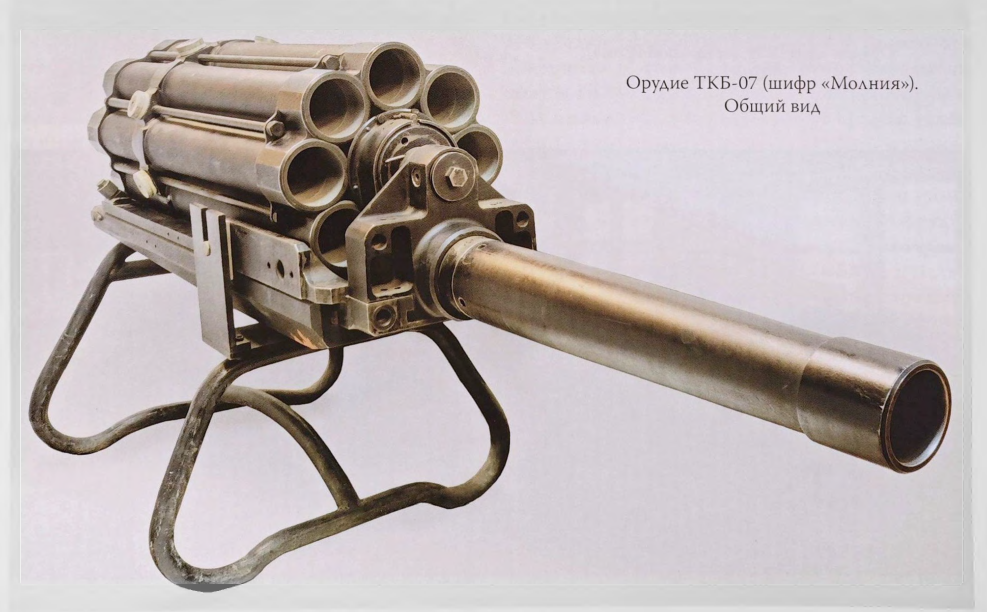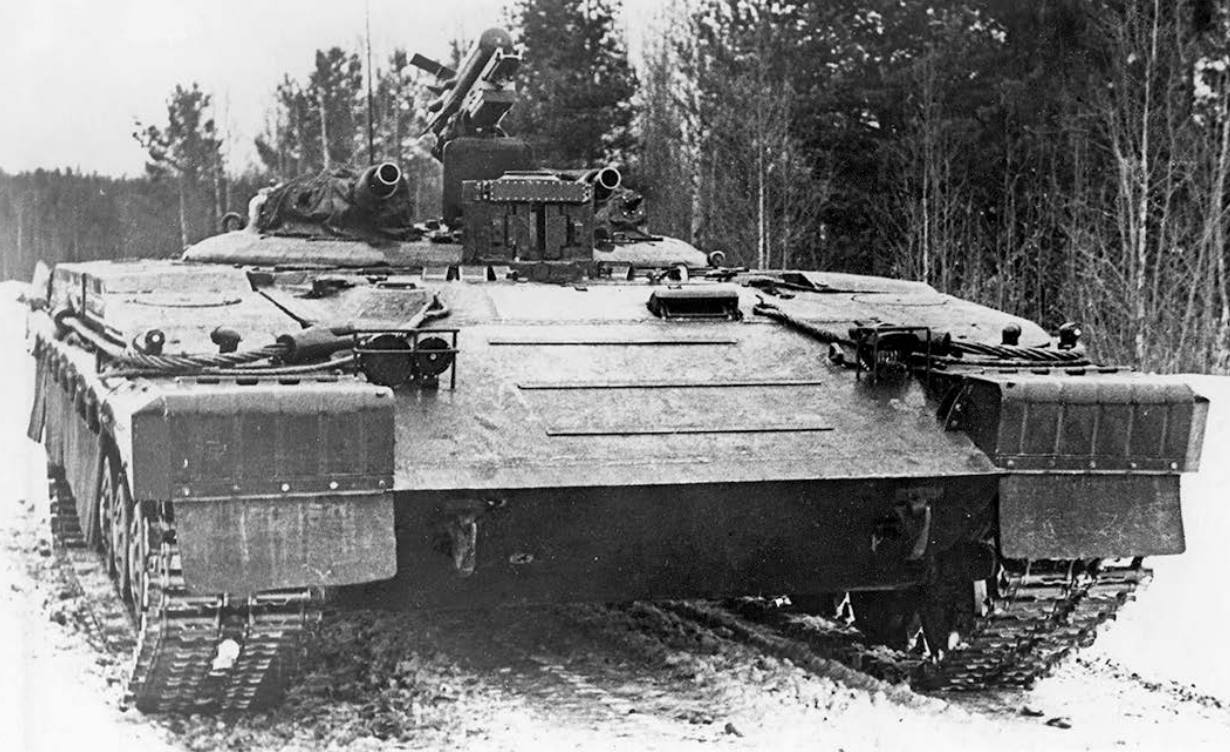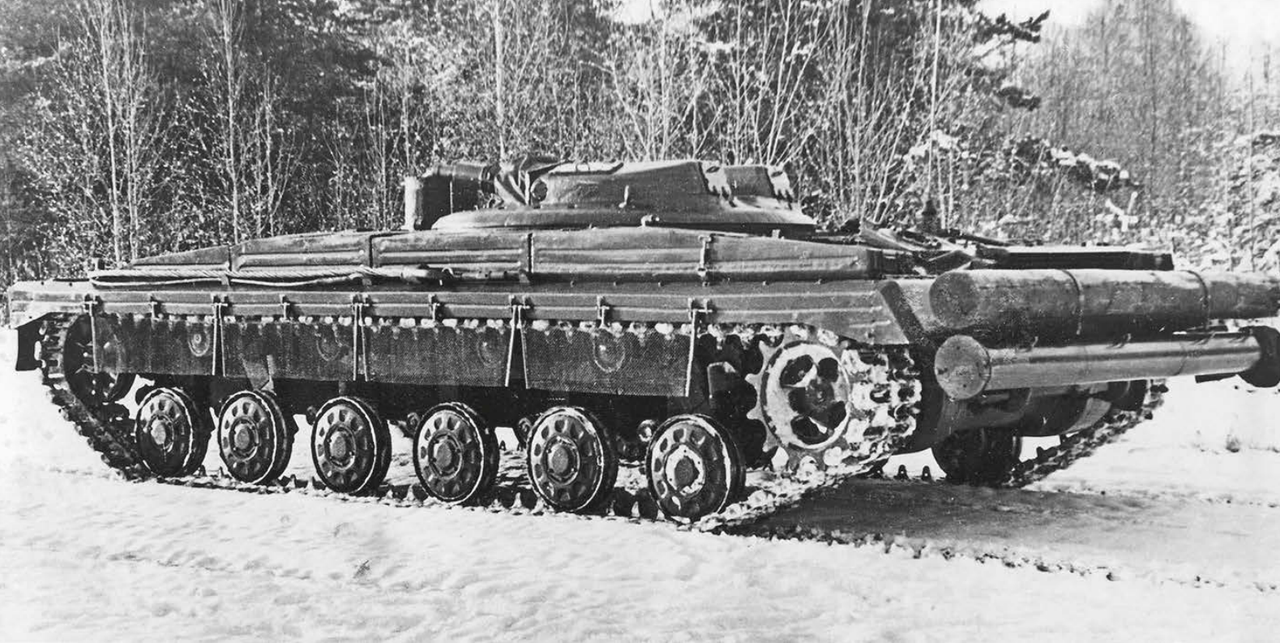Looks quite silly +1
Since it’s very appropriate, I’d like to share this rather humorous and interesting extract of a meeting of the 7th section of the NTS GKOT, dated 30/10/1965 in Soviet archives. The meeting was about the development of the 287.
It’s a long read and probably has some few translation issues here and there but it’s the best I could do. Probably in 2 parts as the forums don’t really like such long posts.
Spoiler
p.11
Madera (LKZ)
“Which option is preferable, better? This question reminds me of who you love more, your dad or your mom. We offer the vehicle in 2 variants.”
Kucherenko:
“What are you tasked for by the government?”
Madera:
“To make a tank with guided weapons”
Kucherenko:
“Were 2 vehicles expected to be developed?”
Madera:
“The development of 2 weapon systems was expected. So, which one is preferable. We made the variant presented on this drawing with 2 guns: Molniya and Grom. According to the specification it has some advantages as it has an additional ammo capacity of 32 rounds. However, the elaboration and release of technical drawings showed that it is not possible to make such a machine weigh 35 t with those requirements, which are fulfilled when it comes to armor. The requirements set by the government decree were not only met, but also exceeded in terms of armor.”
“If we reduce the protection, it will give save us 500 kg / the lower plate CE protection weighs 280 kg, it is not written in the specification; it is not written in the decree either/. Here we have about 700 mm instead of the written 600 mm. If we scrap all this, maybe we can take off 500 kg of weight. 36,2 t is the given weight, here in the technical drawings for all groups, 35 t with this armament setup is not possible. We agreed with the mock-up group and consider it advisable to build such a vehicle for 2 reasons, in order to reduce the silhouette and make the vehicle weigh 35 t.”
p.19
(overweight compared to the object 432, are you sure of the running gear?)
“The weight is 36 t, we give a margin of 1 t. A 1 t margin is 3%. We are confident in the design of Factory 75 and do not believe that the 3% margin is reached.”
Question:
2 people, division of duties, what is done to automate it ?
Madera:
“The driver has a normal manual control system, we have not done an automatic system yet. As for the commander, he has the additional load of firing himself. If now the commander designates the target and oversees firing, then we, like is said for planes, make the commander and the projectile the most qualified members of the crew. We believe that there will be no special overloading of the commander. He selects the target, points it, but instead of losing time to transmit the command, he fires the shot himself. This is more rational, so 2 crew members are considered normal. All other operations are performed by automatic devices.”
p.24 Simachev
“…We have already talked about interference protection here. We are given the task of ensuring simultaneous operation of 9 vehicles, located along the front at a distance of 15m one from the other, on 1 target. No interference protection is specified in the specification…”
p.26 Simachev
(about the effect of radiation on the vehicle, Madera said earlier that they do not have such data)
“…As for the missile, which after the launch will probably fly over the contaminated area, we have very little data on this issue. The available American data says that the equipment did not work in the first time, later it goes back to normal. But since we have no exact data, this question is a mystery for us, as well as for many people here…”
p.29-30 Rozenberg
(About the sight of the machine - in preliminary designs the light transmission was 14%, now they have taken a number of measures to improve the lumen and brought it to 18%. The TPD sight has a factor of 24%, Dalmer - 15%, T2S - 36%.)
p.31 Rozenberg
(about backlighting from the rocket engine)
“I want to say that if it uses a U-42-type image intensifier, with oxygen-cesium, it will be affected by such backlight. We are making a variant using a multi-alkaline image intensifier, which, according to our information, is not as affected by backlight.”
Question:
Is it possible to replace the top of the sight without any additional adjustments and linings
Rozenberg:
“The sight comes with a spare top, which is fully interchangeable with the main part. No adjustments, tweaks, adjustments or adjustments are required when replacing the top.”
Question:
is it possible to remove the photomultiplier tube from the top part
Rozenberg:
“Currently the photomultiplier tube, which protects the image intensifier from extraneous sources of illumination, is placed in the top part of the sight and slightly increases the overall width of the sight. Now we are working on moving the photomultiplier tube to the lower part of the sight and receiving the illumination signal from the image intensifier glass. We have not finished such works yet. We continue these works and we can expect that this proposal will be realized in the next prototypes…”.
p.32 Rozenberg
"…Question:
whether the question of fiberglass has been considered
Rozenberg:
“With regard to this sight such a question has not been studied. We have a topic on development of a sight for night vision with fiberglass only. We are currently developing this point for the object 432.
It should be said that if we have a sufficiently good quality waveguide with a resolution of about 35-40mm with a diameter of 40mm, we can expect that this sight will be considerably simplified, as this system can be replaced by fiberglass.”
Spoiler
p.36 Chistyakov (VNII-100)
"…How does this layout differ from the usual tank layout? Here the place of vision and weapon systems have been swapped and this has led to some very complicated technical problems.
What are these problems?
- It was necessary to raise the weapons very high. Not only do you have to go above people’s heads with these weapons, but the sight as well, and the sight is very large in size.
- The weapon has to extend. There are thin legs on which this weapon extends. Making a large turret does not solve the problem. It leads to a reduction in protection. And we get a strange situation: we protect people very well and protect weapons very poorly.
We at VNII-100 believe that it is wrong to protect an unarmed man in a tank. In war you need not only a protected person who confidently goes into battle, but he must have something to fight with.
Therefore, the task of protecting weapons is no less acute than that of protecting human beings. Here, too, the weapon is unprotected.
The issue of limited visibility is clear, there is no full all-round view. There are dead sectors for firing weapons and this reduces the handling of weapons.
Such a layout required full automation of the fighting compartment, and without understudies. This case is not serious. For tankers this is a fundamentally new issue. We have never had and solved anything like this for tanks. If I was a designer and worked on this vehicle, obviously, I would also start designing automated mechanisms and such devices. And this is natural. All our knowledge and experience guide us along that path.
But I have no doubt that we will have to change options many times to solve this issue.
Automation issues are solved, they are solved in aviation, but are they solved in this way? In aviation, ultra-reliable actuators are made, redundant lines are made, a lot of work is done. I’m wondering why the NTK has lowered its requirements. I must say that MZ was redesigned twice on the bench and the third time on the vehicle."
p.38,
“The machine is not ready at all to take on new missiles. We demand the creation of new missiles and it will be done, people will help us in this, but when the vehicle is built, it will not be able to take up the missiles.”
p.38-39 Chistyakov
(OKB-16 created infantry missiles, slow, with “horned shell”, with manual control. We need fast ones, with automatic or semi-automatic control)
p.40 Chistyakov
“…It will be very difficult to control such a missile at such speeds. It will be necessary to train teacher-operators who could control this missile. This leads to the fact that this vehicle becomes a special tank support machine, to reinforce tanks. VNII-100 has no objection to this. In every official document we indicate that it is necessary to deal with heavy tanks. By heavy tanks we mean special vehicles that have to solve some tasks that cannot be solved by medium tanks. And we believe that a special vehicle has the right to live if it has such properties. But even here it turns out to not be the case. We create a special vehicle and adopt a government decree on the creation of a frontline tank that solves the tasks of this special vehicle. All this makes VNII-100 consider that this technical project cannot be regarded as the technical project of a prototype”
p.41
“This tank cannot be considered. It can be considered only as a research and development project to solve a large conglomerate of important and necessary tasks…But this tank is not the tank that is made according to the government decree…We have approved the preliminary design on condition of solving these issues, now we will also approve the technical design on condition of solving these issues. And when will we solve these issues? Such a decision would be wrong.”
p.42
Rozanov (NII-61)
“Your statement about the impossibility of guiding the missile with the help of manual control is based on what?”
Chistyakov:
"I did not try to guide it myself, but I was very thoroughly questioning the people who sat on your stand. They were Sychev, Starovoitov and other comrades. They were trying to “catch this bunny”. (ed. note : expression meaning they were basically frying their eyes)
Rozanov:
“They came over to play on the stand”
Chistyakov:
“I have that experience. In Nizhny Tagil, when we were handing over tanks, a man would sit on a tank for 2 hours and get the vehicle. I ask how such people will fight with such weapons.”
p.43
Rachitsky:
“You are simply out of touch. In his time, Chuikov could not, and the soldiers fired.”
…
Shcherbakov (VNII-100)
“…I must say that these materials were tested in full-scale conditions in the form of sandwiches and these tests showed that the calculations that were put into this design are correct. Moreover, the production of a mock-up of such a vehicle has been made and it /mock-up/ was not sounded at the special tests. These tests have shown that the calculations included in the design are confirmed, except for a small redan part, where it is recommended to reinforce the underbelly with 60-70mm instead of 15mm.”
p.45 Zilberman (NII-61)
“…When this T-10M tank was moving over medium cross-country terrain at a speed of 10-20km/h, 2,500 electronic firings were made, and the overloads were about 0.25G. At the same time the probability of 0.8 to 0.9 of hitting by such a projectile on the target of the simulator and on real means in field conditions was obtained.”
(goes on to say that’s on the Falanga model, but with stabilization on the initial section, and topic N°31 made a comparison of manual and automatic control on a light tank with electronic firing on tracks with overloads of 0.4, 0.8, and 1.5 G at speeds up to 20km/h. At speeds above 20km/h and overloads of 1.2g G, it is impossible to control any projectile)
p.49 Livtinenko (NTK GRAU)
“…If the tank is hidden in the folds of the terrain, it has no right to retract its weapons. Therefore, the rigidity of the weapon mounts and the protection must be designed for the fact that the /tank/ is in a combat position,we categorically insisted on taking appropriate measures. In this regard, there was a comment about the fact that the crew is well protected, but the armament cannot work. It was said that then the crew should not be put at risk at all, sent to the battlefield, if the weapons are not protected. We believe that some of the protection should be shifted to making the armament operational.”
(further criticizes variant 3, apparently LKZ proactively fighting with the advantage offered a version of the vehicle without 73mm, only with machine guns, says that such a tank will be useless in the built-up area)
p.51 Astrov (MMZ)
“It seems to me that there can be a crew of 2 people in the tank if the tank’s operation is properly ensured by introducing some new special devices, which are unknown to me and even the principle of creating them does not seem clear to me.
In this project there are 2 people: 1 of them is heavily overloaded. The operator performs the functions of operator, machine gunner, gunner, commander, radio operator, etc. This situation is wrong and it seems to me that until the appropriate means are created, until then it is necessary to have 3 people in the tank. In the project we are considering, there are no such means and therefore the vehicle should have a 3rd person.
2nd question, I fully share the considerations on the protection of weapon systems made by Litvinenko. The considerations are absolutely correct, but should be supplemented by one more circumstance. (he believes that it is necessary to reconfigure the fuel tanks, to remove them downwards).”
p.52 Astrov
(says that fiberglass costs 10 000 rubles per ton as a source material. And it is necessary to know how much a vehicle with so much of it will cost, without this it won’t be OK)
p.66 Kucherenko
“Astrov rightly asked a question about the total cost with all these devices. We do not have such data, but the actual redesign of the tank is 25% more expensive than the object 432 /by labor intensity/. Obviously, this vehicle will be significantly more expensive compared to the 432 and 50 percent more expensive compared to the current tank in production.
We have a bitter experience [with VgTZ] and we warn you comrades to pay close attention to this problem. They have produced 3 vehicles, the factory tests have been completed, but they cannot submit them to the state tests”
(Claims about the weight of over 35 tons, a visibility of 145° instead of 200, the vulnerability of the missile on its carriage to HE shells, the protection of the sight)
(At the end of the meeting, Madera indicated that if there were such claims, then why did they approve the preliminary drawings and why is the factory playing with toys.
After that, Kucherenko, at the head of the meeting, took away Madera’s right to speak).
Where did you find this? Amazing stuff!
3009 to ~3025 contain some info on technical requirements and discussions about the 287 (as well as other stuff).
And a bit of hard stats regarding the Molniya guns. The rate of fire is given at 60 rounds per minute.


Another fantastic find! How do you find this stuff?
Let’s say I really like Soviet tanks and know my way around them.
It’s sad the 195 thread has already been closed following consideration because there are many things to address there.
New photos of 287 prototypes during 1964 trials.


God bless you. You always find the best content!
+1. This is what an event vehicle would look like! A tech tree vehicle would look even better though!